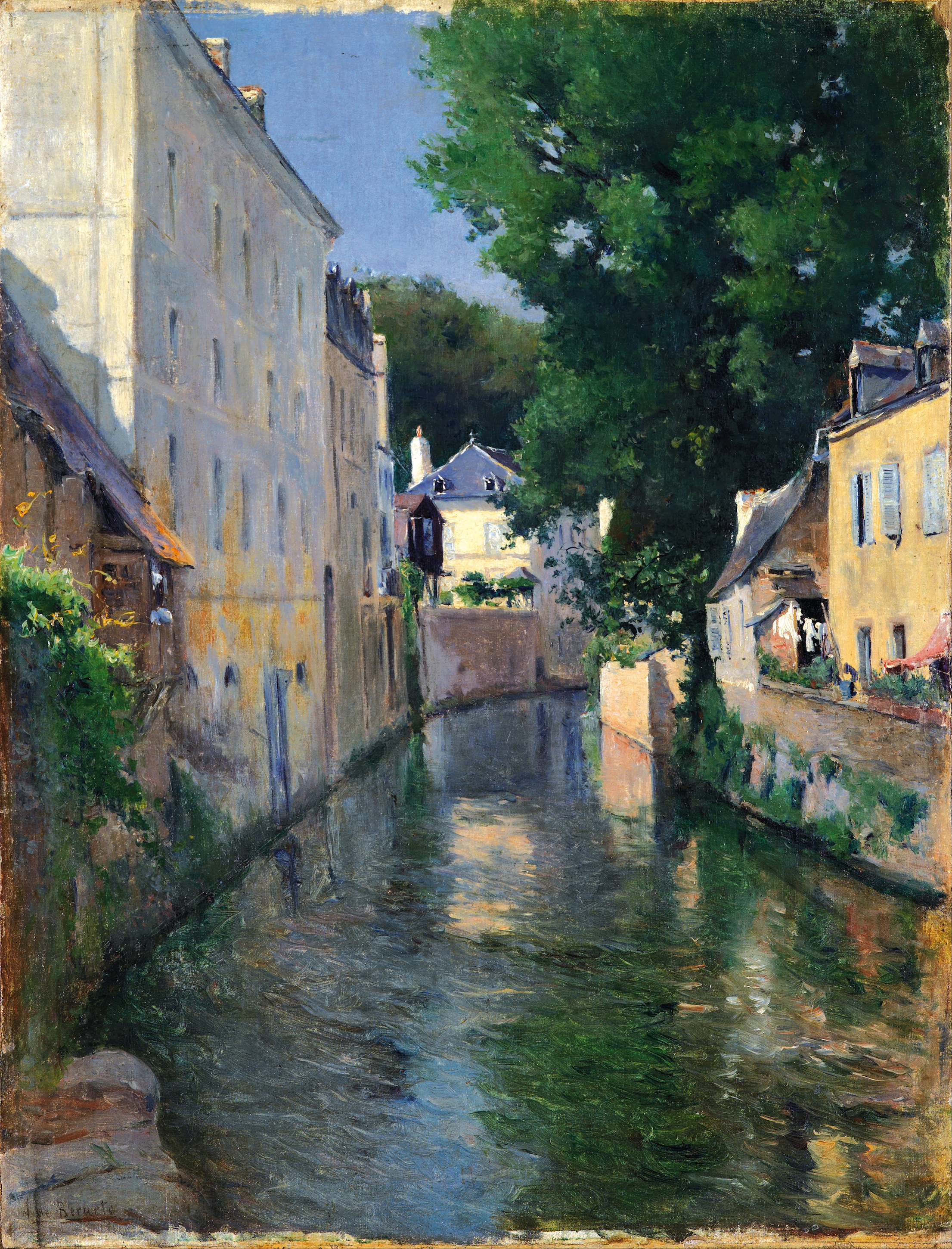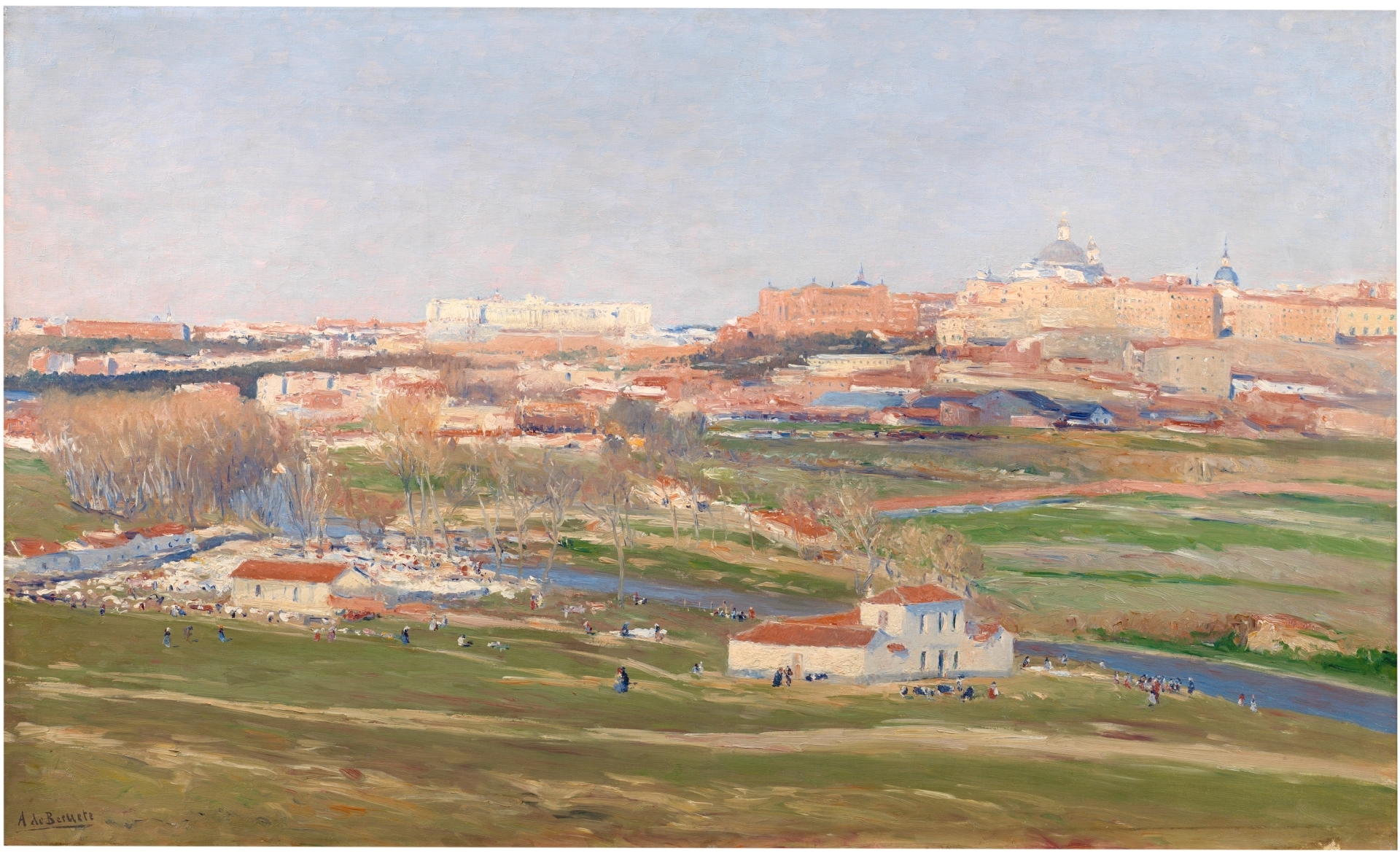In August 1901, Beruete settled in Quimperlé, a town in French Brittany located in a valley near the coast. From a small bridge, known as Pont Salé, he painted this natural perspective of the river Isole as it passes through the city, a place that has hardly changed since then. As a good plenairista, Beruete had a special interest in light, and in this view he managed to capture a bright day in which the sun strikes the wall of a house at the back of the composition, one of the places with the greatest clarity in the picture. He achieved beautiful contrasts between the areas of light and shadow, using a direct technique of fluid brushwork, limiting the fillings, applied by light touches to the lighter points. Beruete captures the charm of the place with a technique of transition between his style, sober, elegant and balanced, and an incipient impressionism, which was not interested in a principle, but adopted in the works of his later years.
Beruete was born into a well-to-do family in Madrid, and he was a man of wide culture. After studying law and being a deputy, his ample income allowed him to devote himself entirely to painting. He had a teacher, Carlos de Haes, who induced him to painting outdoors. Beruete's enthusiasm for art and his traveling spirit impelled him to make constant trips throughout Spain and Europe throughout his life. His painting was recognized with national and international awards and he was also outstanding collector and accurate critic and writer.
During the last years of his life, Beruete wrote several brief treatises on painting and painters, including one of the first monographs on Diego Velázquez, which was published in Paris in 1898. In fact, he numbered most of the great Spanish artists of the day among his friends. After his death in 1912 in Madrid, Joaquín Sorolla organized the first retrospective of Beruete's works, held at Sorolla's mansion.
- Clinton Pittman
P.S. Here you will find 8 things everyone should know about Joaquin Sorolla.


 Aureliano de Beruete
Aureliano de Beruete